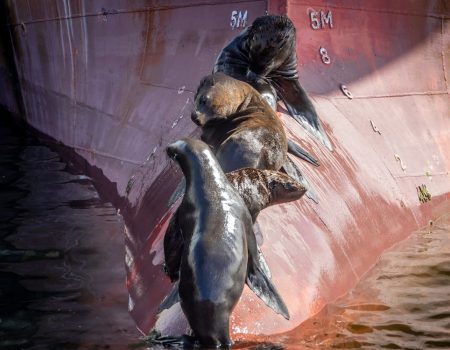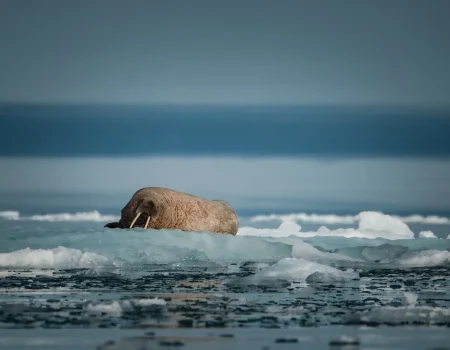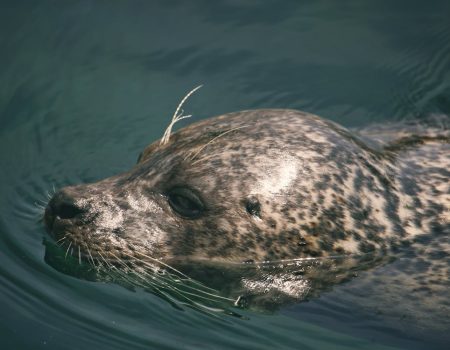You’re ready to set up a cozy home for your axolotl, but you’ve hit a big question: what’s the perfect tank size? Picking the right size isn’t just about space—it’s about creating a comfortable, healthy environment.
Axolotls are unique creatures with specific needs, and the size of their tank plays a huge role in their happiness and well-being.
Let’s figure this out together so your little aquatic buddy can thrive.
Why Tank Size Matters for Axolotls

Axolotls are amphibians that live fully aquatic lives. Unlike fish, they don’t actively swim all day but prefer to explore, rest, and occasionally “walk” along the bottom of the tank.
A female axolotl can lay between 300 and over 1,000 eggs per spawning.
A proper tank size ensures enough room for movement, good water quality, and a stress-free environment. If the tank is too small, your axolotl may feel cramped, and maintaining water parameters becomes harder.
The Recommended Tank Size for a Single Axolotl
For a single axolotl, a 20-gallon long tank is considered the ideal minimum size. The “long” design gives them more horizontal space to roam since axolotls spend most of their time on the bottom. A taller tank with the same volume doesn’t benefit them as much.
However, bigger is always better. If you have space, a 30-gallon tank or larger provides even more comfort and stability. Larger tanks dilute waste more effectively, making it easier to maintain water quality.
Why Bigger Tanks Are Better
- Stability in Water Parameters: Larger tanks hold more water, which means waste products like ammonia, nitrite, and nitrate build up slower. This makes maintaining clean water easier, even if you miss a cleaning schedule.
- Space for Decoration and Hiding Spots: Axolotls appreciate areas to hide, such as caves, plants, and driftwood. A larger tank allows you to add these without taking away swimming room.
- Room for Growth: Axolotls can grow up to 12 inches long. A small tank can feel cramped as they reach their adult size.
Tank Size for Multiple Axolotls
If you plan to keep more than one axolotl, the tank size needs to increase. Axolotls are solitary but can live peacefully together if given enough space. For two axolotls, a 40-gallon long tank is the minimum recommended size. Add an extra 10 gallons per additional axolotl to ensure everyone has enough room.
Axolotls reach sexual maturity at about 6 months of age.
Overcrowding leads to stress, aggression, and competition for food. Always prioritize individual space when housing multiple axolotls.
Tips for Housing Multiple Axolotls
- Provide separate hiding spots to prevent territorial behavior.
- Monitor them during feeding to ensure all axolotls get enough food.
- Keep a spare tank ready in case one becomes injured or sick and needs isolation.
Other Factors to Consider Alongside Tank Size
While tank size is critical, other factors also play a role in creating the perfect environment for your axolotl.
Tank Shape: Long vs. Tall
As mentioned earlier, axolotls thrive in long tanks rather than tall ones. This is because they primarily move horizontally, exploring the bottom rather than swimming up and down. A 20-gallon long tank provides more usable space than a tall tank of the same volume.
Why Horizontal Space Matters
- Natural Behavior: Axolotls “walk” along the tank floor, so they need more horizontal room.
- Better Oxygenation: Long tanks allow for a larger water surface area, improving gas exchange and oxygen levels.
Substrate Choice
Once you’ve got the right tank size, think about the substrate. Avoid gravel, as axolotls may accidentally swallow it while feeding, leading to impaction. Sand or a bare bottom is a safer option. In larger tanks, sand can make the setup look more natural without compromising safety.
They weigh between 2.11 to 8 ounces (60 to 227 grams).
Filtration and Maintenance
A larger tank with a good filter is easier to maintain than a smaller tank. Axolotls produce a lot of waste, so a filter that handles at least twice the tank’s volume per hour is recommended. Even with a larger tank, regular water changes (about 20-30% weekly) are essential to keep the water clean and healthy.
Practical Tank Examples
Let’s go over some practical examples to give you an idea of what works best:
- 20-Gallon Long Tank: Ideal for a single axolotl. Add a sponge filter, sand substrate, and a couple of hiding spots like PVC pipes or aquarium-safe caves.
- 40-Gallon Long Tank: Perfect for two axolotls. This size gives each axolotl its own space and room to explore. Add live plants like anubias or java ferns for extra enrichment.
- 55-Gallon Tank or Larger: Great for three or more axolotls. A larger setup also allows you to get creative with decorations, creating a naturalistic environment that mimics their wild habitat.
Additional Tips for Axolotl Tank Setups
Beyond tank size, here are a few extra tips to make your axolotl’s home just right:
Keep the Tank Cool
Axolotls prefer water temperatures between 60-64°F (16-18°C). Higher temperatures can stress them out and cause health issues. If you live in a warm climate, consider investing in a chiller or using fans to keep the tank cool.
Provide Hiding Spots
Axolotls feel safer when they have hiding spots. Use aquarium-safe caves, driftwood, or even terracotta pots. The more space you have, the more options you can add, enhancing their environment.
Avoid Strong Currents
While filtration is important, axolotls don’t like strong water currents. Choose a filter with an adjustable flow or use a sponge filter, which keeps the water clean without disturbing your axolotl.
How to Choose the Best Tank for Your Space
If you’re tight on space or budget, it’s still possible to create a suitable home for your axolotl. Start with a 20-gallon tank and focus on maintaining excellent water quality and providing enrichment. Over time, you can upgrade to a larger tank if needed.
Before purchasing a tank, measure the space where you’ll place it. Make sure the stand or table can support the weight, as even a 20-gallon tank can weigh over 200 pounds when filled with water, substrate, and decorations.
Axolotl Tank FAQs
Let’s address some common questions axolotl owners have about tank sizes.
Can Axolotls Live in a 10-Gallon Tank?
While a 10-gallon tank might work temporarily for a juvenile axolotl, it’s too small for long-term use. A small tank leads to poor water quality and restricts movement, impacting their health. Upgrade to at least a 20-gallon tank as soon as possible.
What’s the Maximum Number of Axolotls for My Tank?
The number depends on the tank size. Follow the rule of thumb: 20 gallons for the first axolotl and an extra 10 gallons for each additional one. Overcrowding can cause stress, injuries, and poor water conditions.
Do Axolotls Need Tankmates?
Axolotls do best alone or with other axolotls. Fish or other aquatic animals can nip at their gills or compete for food. If you keep multiple axolotls, ensure the tank size meets their needs to avoid aggression.
Setting Up the Perfect Axolotl Home
Creating the right environment for your axolotl starts with choosing the right tank size. A 20-gallon long tank is the minimum for a single axolotl, but going bigger is always better. If you plan to house more axolotls, make sure to account for extra space to keep everyone happy and healthy.
Pair the right tank size with good filtration, a safe substrate, and plenty of hiding spots for a setup that lets your axolotl thrive.
Ready to set up your axolotl’s dream home? Start with the right tank size, and you’ll create a space that keeps your axolotl healthy, happy, and thriving for years to come.
References
Axolotl Care Sheet – Aquatic Solutions
Appropriate tank size for axolotls – Caudata.org
Minimum tank size for axolotls? So much confusion! – Reddit
What size tank does an axolotl need? – Discount Leisure Products
How big should a fish tank be to house 2 axolotls? – Quora
Disclaimer
This content on Bagrica is for informational purposes only. Consult a professional for pet care or farming advice. Bagrica is not liable for any actions taken based on this information.







No Comment! Be the first one.